Introduction
Spring is a time of renewal, a season when gardens awaken from their wintry slumber to burst forth with life and color. To truly harness the power of this transformative season, there is one critical step every gardener should take: mulching. This essential gardening practice not only enhances the aesthetic appeal of your garden but also significantly improves plant health and soil quality. At Plantology, we understand the magic of mulching and how it can revolutionize your gardening experience. In this comprehensive guide, we'll explore the nuances of mulching, helping you cultivate a verdant and thriving spring garden.

Understanding Mulching
Definition of Mulching
Mulching involves placing a protective layer of material on the soil surface around your plants. This layer can be composed of various materials, each with its unique benefits tailored to your garden's needs. The primary purpose of mulch is to retain soil moisture, suppress weed growth, regulate soil temperature, and enhance the health and fertility of the soil.
Organic vs. Inorganic Mulch Materials
The choice of mulch material can significantly impact the effectiveness and visual appeal of your garden. Here's a deeper look:
- Organic Mulch: This includes natural substances like bark, wood chips, leaves, straw, and compost. Organic mulch decomposes over time, enriching the soil with nutrients and improving its structure.
- Inorganic Mulch: Comprising materials like gravel, stones, and synthetic fabrics, inorganic mulch is durable and excellent for areas needing minimal soil contact, such as decorative landscapes.
Historical Background of Mulching Practices
Mulching has a rich history, with practices traced back to ancient civilizations who recognized its value in agriculture. Ancient Egyptians used organic materials to protect their valuable crops from harsh conditions, while early American settlers touted the benefits of using seaweed and leaves for enriching soils.
Today's gardeners benefit from centuries of advancement in mulching techniques, with modern science offering insights into improving plant growth and soil health, all while keeping gardens visually polished.

Benefits of Mulching
Moisture Retention
One of the primary benefits of mulching is its ability to conserve soil moisture by reducing evaporation. This is especially crucial during the dry spells of spring, as consistent moisture levels facilitate robust plant growth.
Weed Suppression
Mulch acts as a barrier, preventing sunlight from reaching the soil's surface and inhibiting weed germination. This reduction in weed growth not only boosts plant health by reducing competition for nutrients but also saves gardeners valuable time and energy.
Soil Temperature Regulation
Mulch helps maintain an even soil temperature, protecting plants from the extreme hot and cold fluctuations that can occur in spring. This is particularly beneficial for young or newly planted species, ensuring their roots and growth areas remain healthy and stable.
Soil Health Enhancement
As organic mulches decompose, they add essential nutrients and organic matter to the soil, improving its structure, aeration, and fertility. This results in better water infiltration and root penetration, supporting vigorous plant growth.
Visual Appeal and Landscape Design
Mulching offers an aesthetically pleasing, uniform appearance to garden beds and pathways. With a variety of colors and textures available, it complements and enhances the visual elements of your garden design.

Choosing the Right Mulch for Your Garden
Consider Your Garden's Needs
Selecting the perfect mulch requires assessing your garden's specific needs, including plant type, climate, and soil conditions. At Plantology, we're proud to offer a wide array of plants that thrive with the right mulch type and care. For example, our Adonidia Palm Double thrives with organic mulches that support moisture retention and nutrient enrichment.
Organic Mulch Varieties
Explore the diverse range of organic mulch materials that work wonders for different garden settings:
- Bark and Wood Chips: Ideal for perennial beds and around trees, these mulches decompose slowly, providing long-lasting ground coverage.
- Straw: Perfect for vegetable gardens, straw decomposes relatively quickly and enriches the soil with nutrients.
- Compost: A nutrient-rich mulch option that speeds up plant growth cycles by improving soil structure and fertility.
Inorganic Mulch Varieties
For durable landscape coverage and distinctive garden aesthetics, consider these inorganic mulch options:
- Gravel and Stone: Excellent for decorative garden paths and drought-tolerant plant settings; provides effective drainage year-round.
-
Landscape Fabric: Used beneath other mulches for effective weed suppression while allowing water and air flow.

Mulching Techniques and Tips
Preparing Your Garden
Before applying mulch, proper garden preparation is essential to ensure effectiveness:
- Clear Weeds: Remove existing weeds to prevent them from growing through the mulch layer.
- Moisture Baseline: Water the soil thoroughly to establish a moisture baseline before applying mulch.
Applying Mulch Correctly
Follow these best practices to achieve optimal mulching results:
- Thickness: Apply a mulch layer 2-4 inches thick, ensuring even coverage around the plant base.
- Keep the Mulch Loose: Allow airflow by avoiding tightly packed mulch.
- Distance from Stems: Leave a few inches of space around plant stems to prevent disease and pest issues.
Maintaining Mulch Throughout the Season
To keep your garden in pristine condition, regular mulch maintenance is required:
- Refresh the Layer: Add a thin layer of mulch as needed to maintain thickness and effectiveness.
-
Monitor for Issues: Check for signs of fungal growth or mulch decomposition that might require addressing.

Popular Mulching Tools and Accessories
Tools to Make Mulching Easier
Having the right tools can simplify your mulching tasks significantly:
- Garden Forks and Rakes: For spreading and leveling mulch uniformly.
- Mulching Blowers or Vacuums: For large areas requiring mechanical application.
- Wheelbarrows: To transport bulky mulch materials across your garden efficiently.
Sourcing Quality Mulch Supplies
At Plantology, we believe in high-quality garden products that elevate your mulching experience. Explore our extensive range of gardening tools and accessories to find the perfect addition for your spring garden revitalization.
Common Mulching Mistakes to Avoid
Over-Mulching
Applying too much mulch can suffocate plant roots and inhibit water infiltration, leading to poor plant health. Stick to the recommended 2-4 inches and adjust according to your specific soil and plant types.
Ignoring Soil Conditions
Failing to consider existing soil conditions may lead to choosing inappropriate mulch materials. Make sure to assess soil pH and drainage qualities when selecting mulch.

Neglecting Maintenance
Regular maintenance is crucial to avoid fungal or pest infestations within your mulch layer. Monitor your mulch, refreshing or thinning it out as necessary.
Case Studies: Mulching Success Stories
Home Garden Transformations
Meet Renee, an avid gardener who transformed her flower garden with the help of organic mulch. Using a blend of bark and wood chips, Renee was able to maintain consistent moisture levels and drastically reduce weed growth, resulting in a flourishing, colorful garden throughout the spring.
Urban Green Spaces
City park landscapes often contend with challenging soil conditions and limited resources. By implementing a mulching strategy using gravel and compost, many urban parks have enhanced the resilience and order of plant beds while adding layers of beauty and habitat support for local wildlife.
Mulching for Specific Plant Types
Optimizing Mulching for Trees and Shrubs
For trees and shrubs, a mulch layer maintains moisture and moderates soil temperature, supporting steady growth. Consider augmenting your landscape with species like the Alexander Palm, which flourish under well-maintained mulch layers.
Perennial Flower Beds
Mulching perennial flowers not only protects roots but greatly enhances flower life and vibrancy. Discover the benefits of mulching for species such as Agapanthus Lily of the Nile, known for its striking blooms and harmonious integration with mulch.

Conclusion: Embracing Mulching for a Flourishing Spring Garden
Mulching is more than a simple gardening task; it's an investment in the health, beauty, and sustainability of your garden. By understanding the different types of mulch, applying them effectively, and maintaining them diligently, you can ensure your garden thrives this spring and all year round.
Explore our Plantology product selections for premium garden plants and tools to complement your mulching efforts. Together, let’s cultivate gardens that are not just landscapes but lush, vibrant ecosystems. Happy gardening!
Mulching Techniques for a Sustainable Garden
Creating Eco-Friendly, Sustainable Gardens
Mulching plays a crucial role in sustainable gardening practices, promoting healthier plant growth while conserving resources. Here are some ways to enhance sustainability in your garden through strategic mulching:
- Using Locally Sourced Materials: Opt for mulch that can be locally sourced, such as wood chips from nearby tree-trimming services or leaves collected from your area. This reduces carbon footprints associated with transporting goods.
- Utilizing Recycled Materials: Recycle garden waste into mulch through composting. Compost enriches the soil and decreases dependency on chemical fertilizers.
- Seasonal Mulching Variations: Adjust mulch types and thicknesses depending on the season. Heavier mulches can protect against cold winter weather, while lighter mulches support summer growth.
Integrating Mulching with Other Sustainable Practices
Sustainable mulching is not just about choosing the right materials but also about integrating mulching into a holistic garden approach:

- Companion Planting: Use mulch in tandem with companion planting strategies to enhance biodiversity and natural pest control within your garden.
- Rainwater Harvesting: Improve mulch effectiveness by using rainwater collected in your garden. Mulch helps minimize water evaporation, allowing plants to benefit fully from natural rainfall.
- Soil Health Management: Regularly test soil health and amend it with organic material to ensure continued fertility alongside mulch applications.
Innovative Mulching Practices
Living Mulch
Living mulch is an innovative approach involving the use of cover crops or groundcovers instead of traditional mulching materials. This method benefits the garden by providing:
- Nitrogen Fixation: Certain cover crops like clover fix nitrogen in the soil, making it available for other plants.
- Erosion Control: Living mulch prevents soil erosion better than static mulch materials, especially on slopes.
- Enhanced Biodiversity: Living mulch can attract beneficial insects and create a more dynamic ecosystem in your garden.
Sheet Mulching (Lasagna Gardening)
Sheet mulching, or lasagna gardening, involves layering organic materials directly on top of the soil without tilling. This technique is excellent for establishing new beds and offers multiple benefits:
-
Breaking Down Weeds Naturally: Starting with a layer of newspaper or cardboard smothers weeds and creates a healthy base for further mulching layers.

- Enriched Soil Over Time: Additional layers of mulch materials, such as grass clippings and fallen leaves, decompose to enrich the soil actively.
- Reduced Soil Compaction: This method minimizes soil disturbance, leading to better soil structure and reduced compaction.
Advanced Mulching Tools and Technology
Innovative Mulching Tools
Advancements in garden technology are making mulching more efficient and effective:
- Mulch Spreaders: These tools facilitate quick and even distribution of mulch across large areas, optimizing labor in extensive garden spaces.
- Soil Moisture Sensors: Integrated technology helps gardeners assess soil moisture levels to calibrate the amount of mulch needed for optimal water retention.
- Smart Irrigation Systems: Pairing these systems with mulch ensures efficient water usage and prevents overwatering.
Data-Driven Gardening
Leverage data analytics to make informed mulching decisions. Access online tools and resources for personalized advice:
- Plant Database Integration: Use plant databases to identify the right mulch types for specific plant species, considering factors like growth patterns and soil preferences.
-
Climatic Data Analysis: Tailor mulch applications with local climate predictions and historical weather data to optimize effectiveness throughout the seasons.

Global Perspectives on Mulching
Mulching Practices Across Different Climates
Gardening techniques, including mulching, vary widely across the globe due to differing climatic conditions. Let's explore some traditional and innovative practices from around the world:
Desert Gardens in arid regions focus on retaining moisture. Gardeners employ gravel mulch to cool the soil while using organic mulches to protect plant roots from harsh sun exposure.
Tropical Gardens often benefit from thick layers of organic mulch like coconut coir and palm leaves, helping maintain humidity and decomposing rapidly to enrich nutrient-poor soils typically found in tropical environments.
International Mulching Techniques
In European countries, with temperate climates, straw and hay are popular mulching materials. They are widely used due to their availability and effectiveness in maintaining soil temperature and promoting biodiversity.
Asian Mulching Practices integrate rice hulls and bamboo leaves, combining traditional knowledge with sustainable approaches to boost soil fertility and retain moisture.

Innovative Mulch Materials: Exploring New Frontiers
Bio-Based Mulch Options
With increased focus on sustainability, bio-based mulch materials are gaining popularity. These innovative options include:
- Cocoa Husk Mulch: Rich in nutrients and visually appealing, this offers a sustainable alternative with a pleasant aroma.
- Biodegradable Fabrics: Made from plant fibers, these fabrics provide temporary mulch solutions that decompose over a growing season.
Recycled Mulch Materials
Recycling waste into mulch reduces landfill overflow and supports garden sustainability:
- Recycled Paper Mulch: Utilizing shredded office paper or recycled newspaper as mulch can enhance moisture retention and suppress weeds.
- Crushed Glass Mulch: Recycled glass is gaining traction in areas prioritizing water drainage, especially around non-organic plant settings.
Personalizing Mulching in Your Garden
Tailoring Mulching Techniques to Your Garden's Needs
Every garden is unique, with its own set of challenges and opportunities:
- Custom Mulch Mixtures: Create custom mulch blends tailored to your garden's needs for combined benefits such as moisture retention and nutrient provision.
- Feedback-Driven Gardening: Document observations, results, and adjustments in gardening logs to fine-tune mulching approaches over time.

Engaging with the Gardening Community
Join local gardening clubs or online forums to exchange ideas, experiences, and success stories related to mulching techniques. Community engagement offers:
- Networking Opportunities: Build connections with experienced gardeners and experts who can offer advice specific to your garden's ecological and climatic circumstances.
- Collaborative Learning: Attend workshops and webinars to stay abreast of the latest mulching trends and technologies.
Conclusion: Cultivating a Greener Future Through Mulching
Mulching transcends mere garden maintenance; it stands as a fundamental pillar in nurturing a sustainable, resilient, and vibrant ecosystem. By understanding, applying, and innovating mulching practices, gardeners can play a crucial role in bolstering environmental sustainability.

Explore our selection of Plantology products, where you'll find everything from mulching supplies to enhanced plant varieties that complement eco-friendly practices. As we stand together, committed to greener landscapes, let's embrace the opportunities for growth and renewal that each mulch application brings. Wishing you a productive and enlightening gardening season!

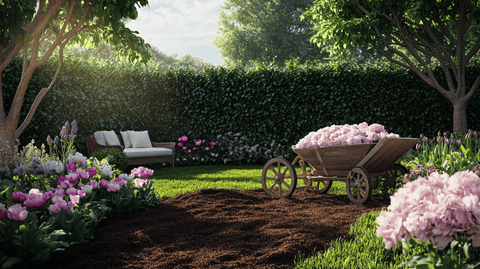











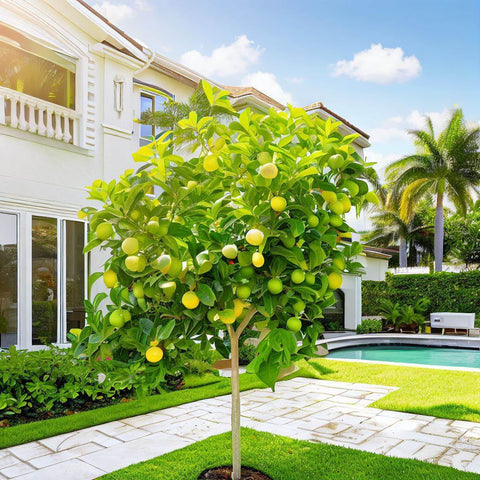



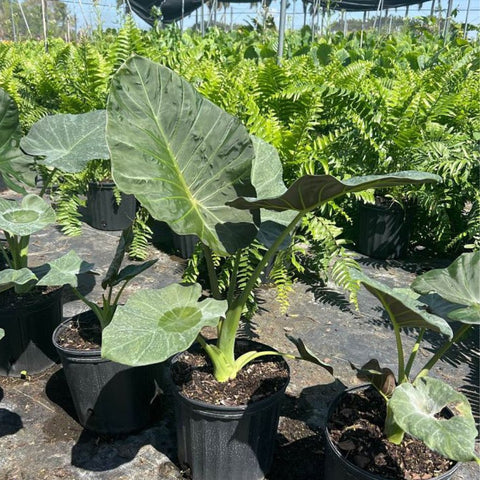
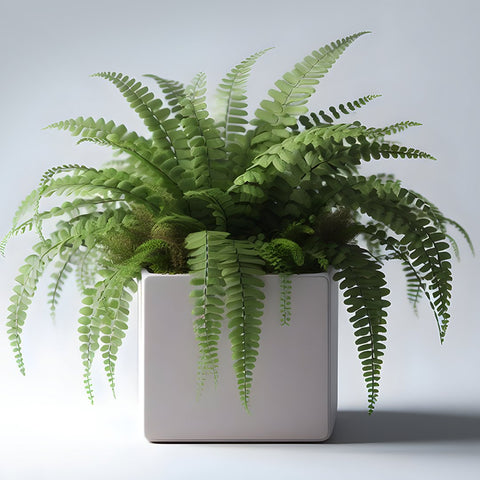
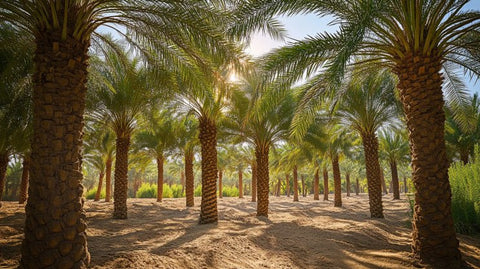
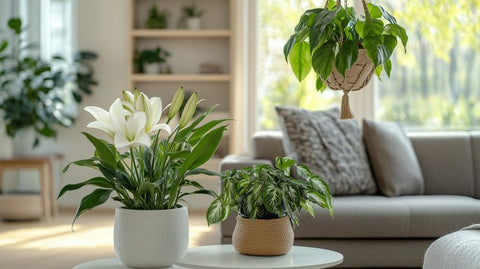









Comments (0)
There are no comments for this article. Be the first one to leave a message!